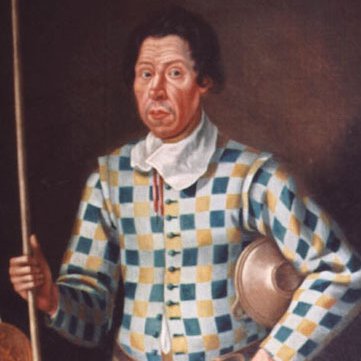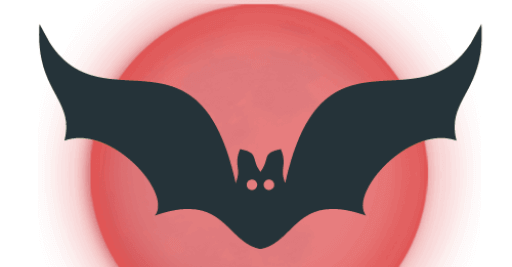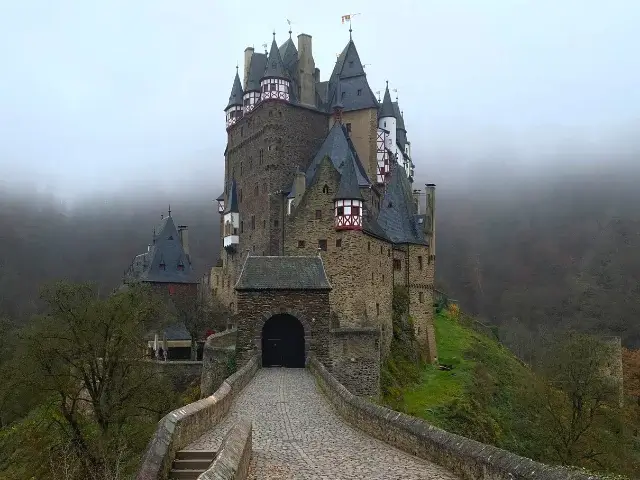Muncaster Castle
Muncaster Castle is one of the most haunted castles in England
Muncaster Castle Ghosts. There are certainly lots of ghosts at Muncaster. In the casebook that accompanied the Strange But True? TV series, the previous owner Patrick Gordon-Duff-Pennington, reported that strange things were still happening. He said,
‘I went to open the King’s Room one morning and then something pulled the door from the other side.’
No one was in the room and no creature of flesh and blood could have held the door then vanished so quickly.
Muncaster Castle Ghosts: Tom Fool

A lot of the ghostly going on at Muncaster are attributed to Tom Fool, who was the fool or jester of Muncaster and who died about 1600. Peter Frost-Pennington told me that he doesn’t believe that it’s Tom Fool who is to blame. ‘Tom is around the castle, keeping an eye on things so to speak, but it’s not him who’s haunting the place.’
Tom Fool (from whom we get our modern phrase ‘tomfoolery’ by the way) wasn’t a nice man. He used to sit by the castle and if passers by asked the way to London, he would consider whether he liked the look of them; if he didn’t he would point them to the quicksands rather than the ford. There’s a portrait of Tom, full of the most curious detail. It’s well worth trying to work out what the rhymes mean and see if you think he would have liked you or not.
The morning I stood by Tom’s portrait with Peter Frost-Pennington, he told me the story and we talked about the claim that Tom was an acquaintance of William Shakespeare’s. Peter explained the dates didn’t quite match and then he apologised to say that the hairs on the back of his neck were standing up. He looked a bit unsettled, and he put it down to Tom’s presence.
Tom is supposed to have murdered the local carpenter by chopping his head off. Though one version has it that this happened in the Tapestry Room, Peter told me that it actually happened in the series of outbuildings that have been recently refurbished as a cafe and study centre. The poor carpenter fell in love with Helwise, the daughter of Sir Ferdinand Pennington. This was such an unsuitable match that Sir Ferdinand paid the evil Tom to do away with the poor man. This he did with glee and brought back the carpenter’s head to show his master that he’d done the deed.
The spirits seem to cluster in this place: The ghost of the mother of a previous owner, Sir William Pennington has been seen walking the corridors. On one occasion, a female visitor was scrutinising one picture on the walls when she heard footsteps coming up behind her. Thinking it was one of her friends, she talked to the person she sensed there. But when she turned round, she saw no one. Then she realised the footsteps had been the sound of someone walking on a stone floor, whereas the floor was carpeted.
Tom isn’t the only ghost at Muncaster Castle.
The ghosts of the Tapestry Room
Somebody else appears to haunt the Tapestry Room. This room has a foreboding atmosphere. There are many portraits and other representations of people in the room dating from various periods, but none of them are smiling. The iron fire dog that lies on the grate is in the shape of a devil’s head. Peter told me he and the other staff have often watched visitors come to the door of the room then stop and go out again, not realising why they don’t want to go in, but still feeling something unwelcoming.
The room often feels unaccountably cold and sometimes visitors complain to the staff about it. Guests who slept in that room often reported unpleasant experiences. There were very often the sounds of the rustling of old fashioned skirts, but on occasions rather upsetting things happened. The late Lord Carlisle slept in the room but was woken in the middle of the night by the sound of a baby crying close to him. Of course there was no human baby near. Other people have heard the baby crying and one of them said that while that was bad, the voice of the woman singing lullabies to soothe it was unbearable.
In the 1980s, a man called James Cartland was researching into documents pertaining to Muncaster, and stayed in the Tapestry Room. He went to bed late one cold winter night with a bunch of old letters to read. He said he’d been in bed a little while when an extraordinary feeling came over him. A muffled muttering began and they heard a noise like a child weeping in the dark corner of the room.
After a time, he heard someone else entering the room and a voice like a woman trying to calm the child. Apparently, Mr Cartland’s story prompted a guest from the year before to come forward. This young woman had been terrified to hear footsteps outside, then the door opened. She sat bolt upright and put the light on, but there was no one. She was the only person staying in the castle, so the next night she was extremely frightened to hear the footsteps again. This time she heard children’s voices singing softly.
After these incidents, Mr Cartland found an old plan which showed that, in the middle of the last century, the Tapestry Room had been the children’s nursery. In April 1994, the Association for the Scientific Study of Anomalous Phenomena sent an investigator called Jason Braithwaite with a team to spend a night in the most haunted rooms at Muncaster. One of the team, Ian Topham, reported something strange in the Tapestry Room at 02:45. ‘Slowly, a figure walked through the open wooden door and paused. It was three-dimensional, but very dark. You couldn’t see any features on it. When it got within a couple of feet of me it sort of vanished.’
His team mate, Melanie Warren, was coming from the King’s Room. She reported, ‘I saw a shadow going into the Tapestry Room. I assumed it was an investigator, and I was just seeing their shadow follow them into the room. I thought I knew where everyone was so that, if an investigator was going in there, perhaps something interesting had happened.’ When she entered the Tapestry Room the only person in there was a white faced Ian Topham.
Peter Frost-Pennington told me that once the haunting of the Tapestry Room became quite well known there was a flood of requests to stay in there. At first people were allowed to do so for free, but now a small charge is made.
Early in the wet summer of 1998, a group of students at the owl centre had come to the end of their stay and, as a goodbye to Muncaster, asked to stay in the Tapestry Room. A number of them crowded in there and most of them slept on the floor. However, one lucky girl got to sleep in the antique four poster bed.
After a lot of talking and joking, the group gradually became quiet and dropped off to sleep. Then, the girl in the bed was wakened by a heavy weight dropping onto her. She sat up terrified and woke the others. Of course there was no one to be seen. Previously, another group of students had spent their last night at Muncaster in the Tapestry Room. On this occasion a young man slept in the four poster bed.
A hooded figure leaned over him as he slept. He thought it was a friend playing a joke, but when he looked to his left, there was the friend asleep on the floor. He gathered up enough courage to look back where the hooded figure had been only to find that it had vanished. You may be able to negotiate permission to stay overnight in the Tapestry Room, but be warned, because of the Castle’s anti intruder system, once you’re in, you can’t get out till morning.
The muncaster boggle
Another ghost at Muncaster Castle is Mary Bragg.
The Penningtons of Muncaster, like the Curwens of Workington and the Musgraves of Edenhall, have their Luck. The Luck of Muncaster is a Fifteenth Century glass basin which was given to Sir John Pennington by Henry VI for sheltering him from his enemies after his defeat in the Wars of the Roses at the Battle of Hexham in 1463. As is usual with these lucks an inscription records ‘…whylles the family shold keep hit unbrekcken they shold gretely thryve.’ One of the least well known of Muncaster’s ghosts, but probably the most often seen is Mary Bragg. When I first met Peter Frost-Pennington we spent so much time talking about the other ghosts that he didn’t mention her.
Then a month of so later, I was speaking to one of the staff of a hotel some miles away when she told me of an experience her godfather had in the gardens of Muncaster Castle. He was training to be a landscape gardener and one day he was working with a partner near the castle when he saw a woman approaching him across the field. As she got closer, gazing at him, he became a little unnerved and prodded his mate.
‘What’s this woman doing here?’ he asked.
The other man looked up, ‘What woman?’ he replied. The woman had vanished.
The next time I saw Peter Frost-Pennington, I told him about this and he said, ‘That would be Mary Bragg.’ Now the interesting point is that the man who saw her has no idea who or what she was to this day, but from Peter’s story, the apparition fits in very well to what is known of the ghost of Mary Bragg.
A coroner’s report from 1805 refers to an inquest held into the death of Mary Bragg. Her corpse was found in the River Esk with its head so badly damaged after being partially eaten by eels that he couldn’t say with any certainty what had killed her. However, Peter’s research has established the following story: Mary Bragg was the housekeeper for the parson who lived in Ravenglass. She was in love with the footman at Muncaster Castle. However, one of the housemaids at Muncaster was her bitter rival for the man’s affections. One night, when the parson was away, two men called on her in Ravenglass.
These men appear to have been the groom and another footman. They told her that her lover was dangerously ill and she should come straight away. Apparently she resisted at first, saying she would go in the morning but they told her that if she waited until the morning, he would almost certainly be dead. That persuaded her, and she went with them.
She began to get suspicious when she realised that the horse’s hooves had been muffled. The coach climbed the lonely road to Muncaster and, near where the car park is today, it stopped. The two men suddenly grabbed her, bundled her into the nearby trees and killed her. There was a tall tree there then which was afterwards called Mary Bragg’s tree. The murderers took her body and buried it under some undergrowth below the terraces at the castle.
They thought it would be eaten by animals and birds. However, by chance, the next day one of the farm boys was taking his cattle down that way and he found the body and reported it to the head gamekeeper. The body was taken up into one of the outbuildings near the terrace.
There was a natural desire at the castle to keep things quiet but such a discovery inevitably got to the ears of the authorities. The coroner was called, but the next day the body had disappeared. It was found some weeks later in the river. Nobody was prosecuted, but a story about the curse of Mary Bragg started to spread. It seems that everyone associated with the murder and its investigation, including the coroner, the doctor and the gamekeeper, died very shortly afterwards.
People soon began to see Mary and sightings have persisted until today. There are three or four members of the staff at Muncaster who will swear to having seen her and there are reports of motorists noticing a distressed looking woman near the entrance to the castle. There are even stories of motorists thinking they’ve hit someone but finding no one there. Peter Frost-Pennington himself believes that he once saw her, going from near the car park to the castle entrance.
Mary Bragg’s Tree
Mary Bragg’s tree got the reputation of being cursed. Over the years it became old and dangerous until in the mid 1990s it had to be cut down. The problem was that no one would do the job. This is actually surprisingly common still in Britain and Ireland and there are documented reports of roads going round sacred or haunted trees in rural areas because no one will cut them down.
In the end a man was found who would do the job. Special permission had to be obtained to close the road and the operation was planned to take the least possible time. Traffic was stopped and the tree was felled. Then the contractor went on to lop off the branches with a chain saw.
As he cut into a thick bough near the top, warm blood spurted all over him. It was most probably a hibernating bat asleep in the tree, but the blood did much to confirm the tree’s reputation. In the end, nobody would buy the wood and it had be taken out of Cumbria to be sold……
This historic castle and splendid gardens are open to the public. There’s an admission charge. There’s also an international owl centre and places to eat.
Experience the ghosts of muncaster castle for yourself
Beside the main castle are the old coach-houses. Muncaster has created modern deluxe guest rooms here that you can stay in. Clik the button below to check availability.
Rob Kirkup discusses Muncaster Castle Ghosts in Ghostly Cumbria. Why not plan a little mini-break?

